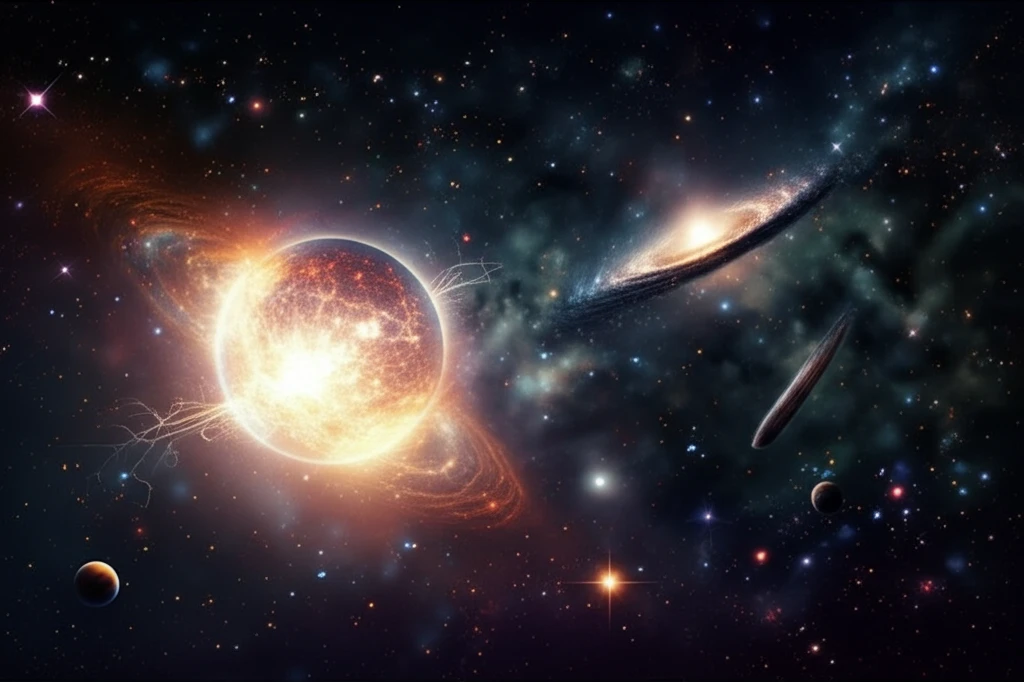
Unlocking the Mysteries of Fast Radio Bursts: Are Supergiant Pulses the Key?
"A Deep Dive into FRBs, Neutron Stars, and the Quest for Extraterrestrial Signals"
In the vast cosmic theater, Fast Radio Bursts (FRBs) emerge as brief, intense flashes of radio waves that have puzzled scientists since their discovery. These bursts, lasting only milliseconds, release an extraordinary amount of energy, rivaling that of millions of suns. Their origin remains one of the most exciting mysteries in astronomy, driving researchers to develop innovative theories and explore diverse cosmic phenomena.
One intriguing hypothesis suggests that FRBs are not random events but rather "supergiant pulses" emitted by young, energetic neutron stars. These supergiant pulses would be amplified versions of the regular pulses observed from pulsars, potentially linking these bursts to some of the universe's most extreme objects. This theory provides a framework to explore the possible connection between FRBs and other high-energy phenomena, such as ultraluminous X-ray sources (ULXs).
This article delves into the supergiant pulse model, examining its predictions, the current evidence supporting it, and the future observations that could confirm or disprove its validity. Join us as we journey to the forefront of FRB research, uncovering the potential role of neutron stars in this cosmic puzzle.
What are Supergiant Pulses and How Do They Explain FRBs?

The supergiant pulse model proposes that FRBs are extreme manifestations of pulsar activity. Pulsars, rapidly rotating neutron stars with intense magnetic fields, emit beams of electromagnetic radiation. Occasionally, these pulsars produce giant pulses (GPs), which are significantly brighter than their regular emissions. The supergiant pulse model suggests that under special conditions, young, highly energetic pulsars can emit pulses that are orders of magnitude stronger than typical GPs, resulting in the powerful signals we detect as FRBs.
- Energy Output: Supergiant pulses could account for the immense energy released by FRBs.
- Source Size: The short duration of FRBs implies a small emission region, consistent with the size of a neutron star.
- Dispersion Measure (DM): The high DM values observed in FRBs can be explained by the dense plasma surrounding a young pulsar within its supernova remnant.
The Future of FRB Research: Confirming the Supergiant Pulse Model
The supergiant pulse model offers a compelling framework for understanding FRBs, but further observations are needed to confirm its validity. Future research will focus on several key areas: <ul> <li><b>Searching for ULXs:</b> Identifying ULXs coincident with FRB locations would provide strong support for the model. Dedicated X-ray observations and all-sky surveys will be crucial in this search.</li> <li><b>Increasing FRB Statistics:</b> More detections will allow for better statistical analyses, including correlations with nearby galaxies and tests of isotropy.</li> <li><b>Multi-Wavelength Observations:</b> Combining radio data with observations in other wavelengths (X-ray, optical, etc.) can provide a more complete picture of FRB sources and their environments.</li> </ul>
